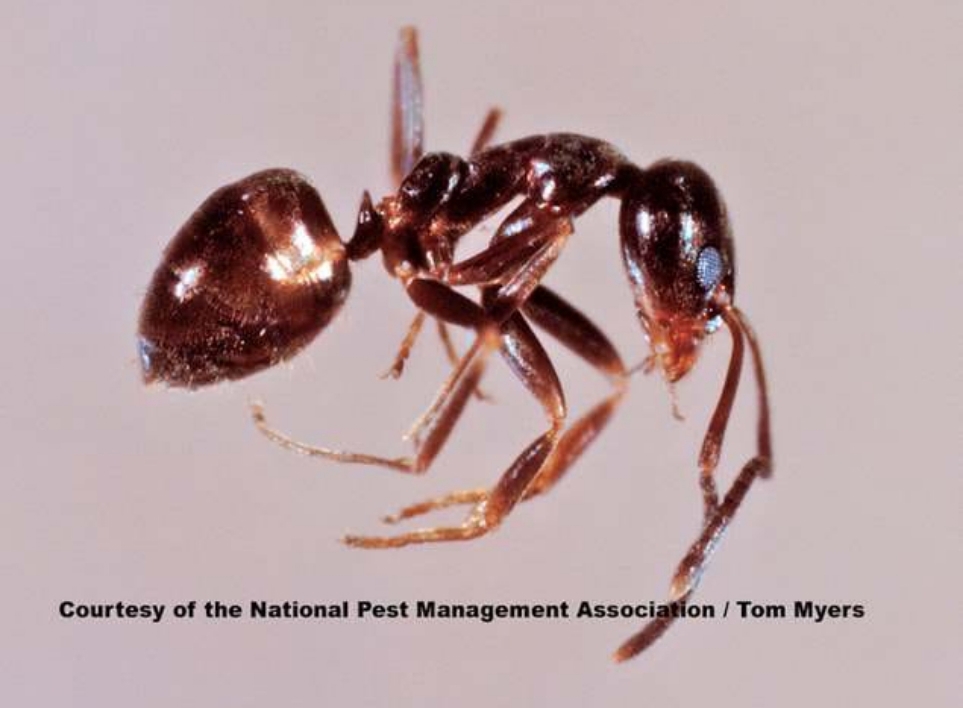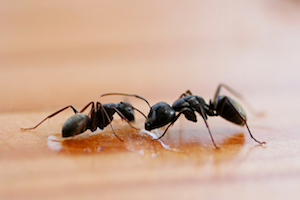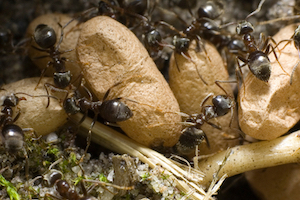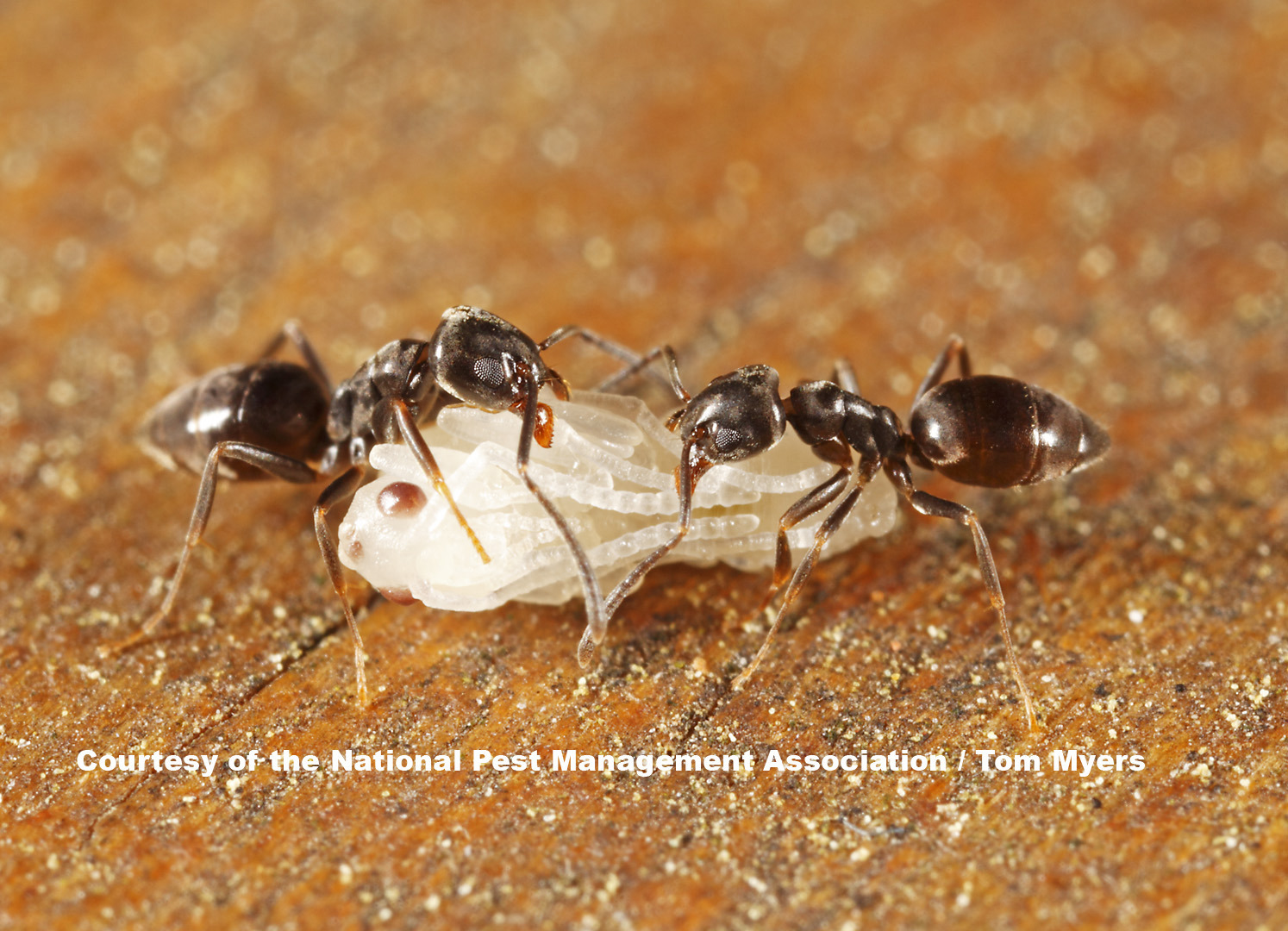Argentine Ants Linepithema humile

Argentine Ants Identification
Color: Dark brown to black; shiny
Size: 1/16" - 1/4"
Legs: 6
Antennae: Yes
Shape: Segmented; oval
Region: Mainly Southeastern U.S. States
What is an Argentine Ant?
Argentine ants are an invasive species originally native to Argentina, Uruguay, Paraguay, Bolivia and southern Brazil. They can now be found in many places around the world, including South Africa, New Zealand, Japan, Australia, the United States and Europe. Argentine Ants are believed to have been originally introduced to the continental U.S. in New Orleans via coffee ships from Brazil in the late 1800’s.
Today, Argentine ants are widespread throughout the southern states, California and Hawaii. Less widespread infestations are also found in Arizona, Missouri, Illinois, Indiana, Maryland and the Pacific Northwest.
Like all ants, Argentine ants go through the developmental process called complete metamorphosis. Development time can change depending on temperature, but on average eggs hatch in about 28 days with ants reaching adulthood in about 74 days.
What do Argentine Ants Look Like?
Argentine ant workers are typically light to dark brown in color and range between 2.2 to 2.8 mm long. They are wingless with 12-segmented antenna and emit a musty odor when crushed. Queens are slightly larger than workers, measuring between 4 to 6 mm long. Reproductives (queens and males) may have wings.
There are a number of ways to protect your home and property from Argentine ants. Like most pests, they are attracted to moisture and food. To prevent Argentine ants, eliminate any standing water around the property by emptying flowerpots, birdbaths, grill covers and baby pools. Also, be sure to clean up food spills immediately, keep food stored in tightly sealed containers, and remove waste regularly. It is also important to trim tree branches and other plants around the home that may be touching the structure, as they can serve as highways for Argentine ant entry. They will also enter through cracks or small openings around the foundation of the home, so it is important to thoroughly inspect your house for these openings and make sure they are fortified and sealed. Lastly, store firewood and building materials at least 20 feet away from the house and remove yard waste regularly, as these can serve as ideal nesting sites for Argentine ants.
Argentine ants are resilient, as they will often bounce-back after being eliminated because of their ability to easily reproduce. It’s important to contact a pest management professional when you think your home or property has been invaded by Argentine ants. The professional will inspect your home and property to identify the source of the infestation, and then come up with the best solution to eradicate the Argentine ant infestation and protect your home from any future attacks.
Argentine ants are very efficient foragers that follow regular trails when searching for food, and winged queens can sometimes be found among trailing workers. Unlike most ants, who only deposit pheromone trails on their way back to the nest from a food source, Argentine ants will deposit pheromone trails both to and from a food source. This behavior ensures they do not waste time revisiting the same area for food. Their preferred foods are sucrose-containing sweets, but they increase their intake of protein-rich foods during their peak reproductive months of the spring and summer. Argentine ants are known to be aggressive towards other ant species, and will attack competing ants when they move into a new area.
Argentine ant queens mate with males solely to populate the colony. Mating is the only purpose for Argentine ant males who will live for about a year and then die shortly after mating. The eggs laid by queens usually produce sterile female workers, who have many responsibilities in the colony including foraging for food, nursing eggs and feeding larvae.
Argentine ant colonies can contain hundreds of queens. For every 1,000 worker ants, it’s estimated there can be up to 15 queens. Unlike some other ant species that establish new nests through swarming, Argentine ants reproduce through a process known as budding where queens and males will mate within the parent nest before leaving with a handful of workers to start a new nest. These networks of interconnected nests can expand to form massive colonies called supercolonies that can contain millions of members, including multiple queens, and have been known to populate entire city blocks.
Argentine ant colonies are typically located in wet environments near a food source. Outdoors, they usually build shallow nests in moist locations such as under boards or stones, beneath plants or along sidewalks. When the conditions outside are not favorable for the ants to thrive, usually too cold or too dry, Argentine ants have been known to invade buildings in large numbers. Once inside, they will still nest near a source of moisture, such as water pipes, sinks and potted plants. One common way ants gain entry into a home is by trailing along tree branches or utility lines that contact the structure.
Argentine ants do not pose an extreme health threat, but they are known to crawl over sewage, trash and dead animals while looking for food and can be carriers of disease-causing bacteria for conditions like dysentery. If they gain access to a household’s kitchen, they are capable of contaminating food. In areas where large numbers of Argentine ants are present, workers have even been known to attack poultry chicks and destroy beehives.
Argentine ants do not have stingers and only bite humans when provoked. However, the bites are not severe and pose no major health risks.
The most common sign of an Argentine ant infestation is witnessing the trails of ants, often traveling up buildings, trees and into homes. The trails will oftentimes be wide and noticeable.
If you suspect an Argentine ant infestation in your home, the best course of action is to contact a licensed pest control professional. They will conduct a thorough inspection to identify the full extent of the problem. Once the situation is properly identified, the appropriate control measures can be taken.
You can find a certified pest professional near you with the helpful zip code search below.






